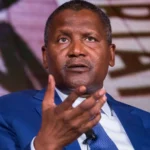The world today is inhabited by close to 7.3 billion people. Out of this population, about 1.8 billion are between the ages of 10-24, representing the largest generation of youth in history. Furthermore, close to 90per cent of the world’s youth live in developing countries, where they make up a large proportion of the population.
These numbers are expected to grow exponentially, which actually started about four years ago in 2015. By 2030, the world population is expected to be about 8.5 billion, from which about 1.9 billion young people are projected to turn 15 years old.
Africa is demographically the youngest continent in the world because young people are the majority, contrary to the aging population in the rest of the world. Within Africa itself, half of the population in Sub-Saharan Africa is under 25 years of age, and there is a projection that starting from 2015 to 2035, there would be half a million more 15-year-olds each year, more than the year before it. This is what constitutes the youth bulge, which has its advantages and disadvantages, and we shall discuss this aspect later in this presentation. Overall, young population is not really a burden because young people are a major source of human capital if properly handled.
In our case, with an estimated current population of about 200 million, Nigeria is the most populous country in Africa and seventh in the world, and with more than half of her people under 30 years of age. By implication, therefore, Nigeria also maintains a young population. Nigeria’s population is among the fastest growing in the world. At independence in 1960, Nigeria’s population was 45.2 million. The 2012 estimates saw Nigeria’s population at 166.2 million, according to the National Bureau of Statistics; but in 2016, it was estimated to be 178.5 million people, while the United Nations projections placed it at 186 million. However, the 2019 estimation was 200.96 million at the rate of about 3.5 per cent annually, weighed against other variables such as rising life expectancy and a declining infant mortality rate. It is estimated that at this rate, Nigeria’s population would be about 236 million in 2030, and 410 million by 2050, to become the third largest population in the world, and most of it would be young.
Youth development in contemporary Nigeria
Youth development is described as a process that prepares young persons to meet the challenges of adolescence and adulthood in order to achieve their full potentials. The responsibility of youth development, therefore, rests first on parents, then teachers in schools, religious communities, businesses and civic organisations. Parents are their children’s first teachers and remain their best teachers throughout life, by providing the right guidance and support. However, children do have the challenge of peer pressure outside their homes, which sometimes overrides the parental efforts of positive development.
In addition to peer pressure, there is the problem of working parents in contemporary Nigeria, who often leave their children at the mercy of house-helps, who in many cases, subject the children under their care to all kinds of abuses that would invariably affect the process of development. Likewise, for many indigent parents, the children are exposed to danger through street hawking as a result of efforts to supplement the family income in order to keep it alive, thereby making them vulnerable to sexual abuses and drug addiction. A number of these children in the streets are not only vulnerable to violent gangs, particularly the girl-child, who is at the mercy of rapists, sometimes leading to unwanted pregnancies and sexually transmitted diseases, but are also likely to be victims of abduction and ritual killings. Also, a significant number of these street children are victims of human trafficking and modern slavery; as such, they do not live with their biological parents, and may not even attend school.
Globally, there is an estimated 168 million children involved in child labour, and 59 million of them are in Sub-Saharan Africa. The International Labour Organisation (ILO) estimates that in Nigeria, about 14 million children between the ages of five and 14 are involved in various forms of economic activities, and street hawking is one of the main forms of child labour. And the girl-child is the major victim.
Of particular concern to the issue of street children in northern Nigeria is the almajiri phenomenon, a word derived from an Arabic word “al-Muhajirun,” meaning a person who leaves his home in search of Islamic knowledge. Originally started in the old Kanem-Borno Empire, it was designed for the acquisition of Islamic education in a well-organised and comprehensive manner, funded through the state treasury and zakat funds under the control of the traditional rulers. The curriculum included the teaching of Islamic values, principles and jurisprudence, in addition to the recitation and memorisation of the Qur’an. While communities supported the schools (tsangaya), the almajirai offered various services to the communities, including laundry, cobbling, gardening, weaving, etc. The students were also at liberty to acquire vocational skills in between their Islamic lessons. This arrangement ensured that the almajirai were not a burden to the society.
But what we have today as almajirai are neglected and abused children roaming the streets almost naked, with torn and dirty cloths, while walking barefooted and holding plastic bowls begging for survival. Their ages range from two to 15 years, with rashes all over their bodies, evidence of exposure to filth and the fact that they have not taken bath for weeks or even months.
Recently, the Kano State governor, Abdullahi Ganduje, was quoted as saying that there were about 3 million out-of-school children roaming the streets of Kano as almajirai, with a significant number coming from Nigér, Chad and Northern Cameroon.
Also, education of the girl-child is of particular concern, particularly in the North, where early, and sometimes forceful marriage is rampant. The challenge to most northern Muslim parents is how to create a balance between allowing the girl-child to acquire as much formal education as possible, and simultaneously ensuring that they are protected from any form of pre-marital sexual contacts. Girls are often given out in marriage even before they reach the age of 14, which is the beginning of the youth in line with the United Nations (UN) definition. A significant number of such marriages are experiencing early high divorce rate.
A 2007 survey of the divorce rate in Kano was found to have had a significant disruption in the family system, resulting in a number of social problems, such as juvenile delinquency, prostitution by young women and drug abuse by the youth.
What is even more worrisome is the fact that the society ends up with very young divorced girls who are experiencing trauma. And they are low in education or completely uneducated in either universal or Islamic education. They are unskilled, unemployable and may be susceptible to negative disposition towards men. Such people may end up being on drugs, mainly to escape their trauma. They may also be exposed to prostitution.
In the southern part of the country are youths involved in various crimes, intimidation and harassment of the public, as well as the abuse of hard drugs. They are the people described as area boys (agbero) in the South-West, especially in Lagos; the cultists and militants in the Niger Delta and the Indigenous People of Biafra (IPOB) in the South-East.
Almost all our universities and some secondary schools experience the challenge of cultism amongst students. In some instances it has been alleged that lecturers are also involved, in addition to their exploitation of female students in sex-for-grade.
If parents are responsible for positive upbringing of their children, educational institutions are generally meant to provide the platform for the development of cognitive, physical, social and civic skills and responsibilities of the youth. What does the overall picture above tell us about the challenges of youth development in contemporary Nigeria?
The challenges of youth development in Nigeria are real. However, it must also be said that the youth are not a burden; rather, they are agents of national development if properly handled.
There are significant challenges to the phenomenon of youth development in contemporary Nigeria. Among these challenges are impact of globalisation; population explosion and youth bulge; the internet, digital communications and social media; climate change and environmental degradation; increase in global security threats, particularly transnational crimes, including terrorism.
Globalisation is a political, technical, cultural and economic phenomenon. It is about integration of global societies; it is about ease of doing business and encouraging access to markets. It has both negative and positive impacts on societies. While it benefits humanity as a whole, it also harms certain groups, such as the youth. Globalisation has made the world smaller in terms of communication technology. It has facilitated trade and commerce among nations, de-emphasised physical borders between and among countries, encouraged regional integration, such as the European Union and African Union, strengthened the United Nations, particularly on peace and security efforts, in which Nigeria was rated as one of the highest troop contributing countries in the world; and a whole lot of micro and macro-economic development.
Dambazau, CFR, PhD, a former Chief of Army Staff and Minister of Interior, delivered this lecture to the 1970 Intake of the Barewa Old Boys Association.
To be continued next week




